Board Games: Rapid Review Roundup
John Pappas is Library Branch Manager at the Bucks County Free Library System (PA). He has contributed numerous WebJunction articles and presented a webinar on board games and libraries and he blogs at Board in the Library. Read his six-part series on board game programming in public libraries and webinars, The Golden Age of Gaming: Board Games for Grown-ups and Whose Turn Is It, Anyway? Online Board Gaming and Libraries.
Welcome to Rapid Review Roundup! In each Roundup I will pull five games of a similar theme, mechanism, or age demographic and provide a brief overview of each. I’ll discuss how they play and what I think of them. In this edition, let’s examine some children’s games. Each selection has short rules and plays fast. They lean more towards games children play with adults rather than games children play independently. However, they will be engaging, fun, and rewarding for everyone involved. Each selection will increase in difficulty and depth of play starting with the shortest and easiest games and working up to those requiring more involved set-up and strategy.
So let’s start with my current house favorite...
Sleeping Queens
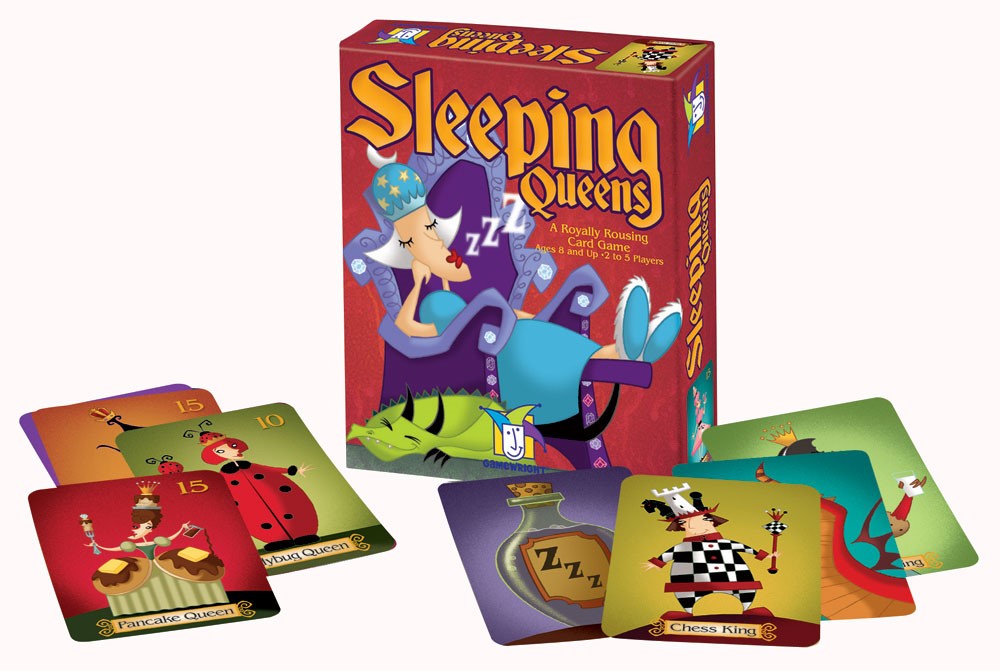 Sleeping Queens (BBG, Amazon) comes from GameWright ̶ the same publishers that brought us the perennial favorites Forbidden Island and Sushi Go! It plays 2-5 humans for ages 8 and up, although I’ve had luck with younger as well. Sleeping Queens is a light, simple “fishing” card game where players need to use strategy, memory, and a little math to be the first to wake up five napping queens. The 12 queen cards (including such favorites as the Pancake Queen and the Ladybug Queen) lie face-down on the table and are worth anywhere between 5 and 20 points each when you wake them up. There is a general draw deck where players are dealt five cards each.
Sleeping Queens (BBG, Amazon) comes from GameWright ̶ the same publishers that brought us the perennial favorites Forbidden Island and Sushi Go! It plays 2-5 humans for ages 8 and up, although I’ve had luck with younger as well. Sleeping Queens is a light, simple “fishing” card game where players need to use strategy, memory, and a little math to be the first to wake up five napping queens. The 12 queen cards (including such favorites as the Pancake Queen and the Ladybug Queen) lie face-down on the table and are worth anywhere between 5 and 20 points each when you wake them up. There is a general draw deck where players are dealt five cards each.
The draw deck is similar to a standard deck of cards with a couple of twists. The queens, as stated above, are already facedown on the table. The rest of the deck consists of kings, knights, dragons, potions, wands, jesters, and numbered cards. On your turn, you can play a king to wake up a queen, play a knight to steal someone’s queen (unless they have a dragon to scare the knight away), play a potion to put someone’s queen back to sleep (unless they have a wand to counteract the potion), or play a jester to flip over the first card from the draw deck and possibly wake up a queen. If you don’t have or don’t want to play any of the cards above, you can discard pairs of numbered cards or math sets to draw up more cards into your hand. The numbered cards can be used to draw up new cards into your hands and the longer the set, the more new cards the player can get.
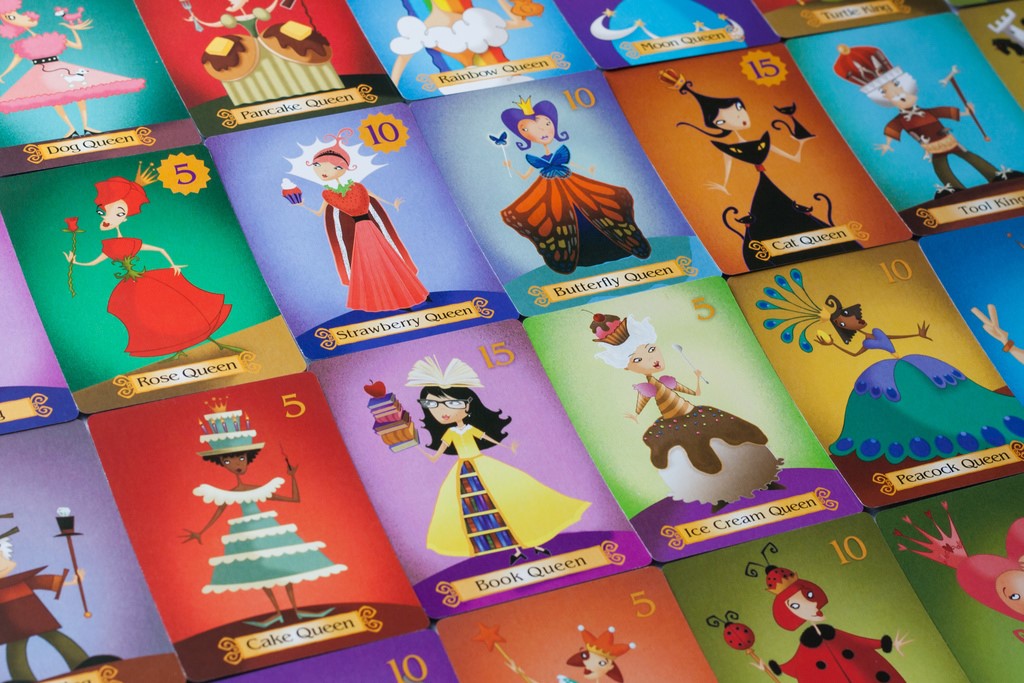 Bottom Line: I love this game for children aged 6-8. It has a nice balance of a couple of mechanisms. The math element is simple and instructive without being heavy-handed. For example, you could link up a 1, 2, 5, and 8 (1+2+5=8) for four new cards. You can also start to sequence in basic subtraction and simple multiplication/division. The queens have different point values and special powers (such as the Dog Queen and Cat Queen not being able to be in the same hand) so there is a delightful memory element once the queens start moving around. The slight “take that” mechanism of the knight/dragon and potion/wand cards isn’t mean ands adds a bit of the competitive flavor that tends to overpower other children’s games. Unlike many “simple” card games for children, this game does not last forever. One game will be done in 10-15 minutes. The 10th Anniversary Edition comes in a nice tin (great for circulating collections) and some sticker sheets (because who doesn’t love some stickers).
Bottom Line: I love this game for children aged 6-8. It has a nice balance of a couple of mechanisms. The math element is simple and instructive without being heavy-handed. For example, you could link up a 1, 2, 5, and 8 (1+2+5=8) for four new cards. You can also start to sequence in basic subtraction and simple multiplication/division. The queens have different point values and special powers (such as the Dog Queen and Cat Queen not being able to be in the same hand) so there is a delightful memory element once the queens start moving around. The slight “take that” mechanism of the knight/dragon and potion/wand cards isn’t mean ands adds a bit of the competitive flavor that tends to overpower other children’s games. Unlike many “simple” card games for children, this game does not last forever. One game will be done in 10-15 minutes. The 10th Anniversary Edition comes in a nice tin (great for circulating collections) and some sticker sheets (because who doesn’t love some stickers).
The Mysterious Forest
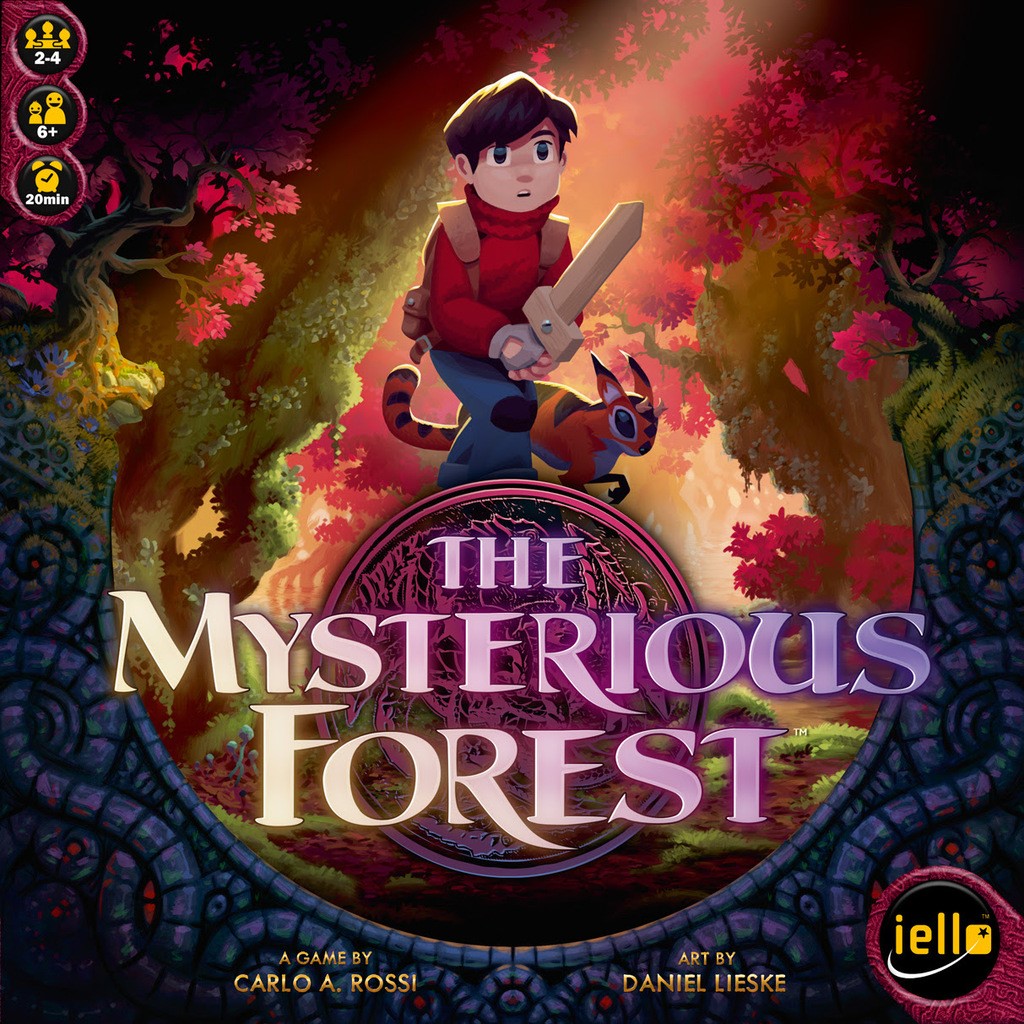 The Mysterious Forest (BGG, Amazon) from Iello may be one of the few memory games I actually enjoy. This cooperative memory game is inspired by the digital graphic novel series, The Wormwood Saga, by Daniel Lieske.
The Mysterious Forest (BGG, Amazon) from Iello may be one of the few memory games I actually enjoy. This cooperative memory game is inspired by the digital graphic novel series, The Wormwood Saga, by Daniel Lieske.
The players work together to help Jonas, our young protagonist, cross the Mysterious Forest and battle the evil Queen of the Draconia (this queen is certainly NOT asleep). You play the game in three phases. In the first phase you scout the path that Jonas will take through the forest. The forest will be made up of 8-10 cards depending upon the difficulty setting. Each card has amazing artwork from Mr. Lieske and the different items needed to continue past the card. The goal of this phase is to memorize the items one card at a time. It sounds like a lot, but luckily, we are all working together.
The next phase is preparing for the journey. Jonas has a backpack with more than enough room to fit everything he needs but do you remember what those things are? Each player will take turns rolling four dice and choosing two of the items that are rolled to put into Jonas’ backpack. This continues until the entire backpack is filled with equipment. It is pretty much your standard camping fare ̶ rope, magnifying glasses, compasses, maps, wooden swords, lighters, and Loki. Wait...what? When you roll your little animal friend Loki, you get to send him back to the camp for supplies. He is extremely helpful and can fetch you an item when you really need it!
The last phase is Jonah’s expedition through the forest. Are you ready? Did you prepare him with everything he needs? You flip over each card and resolve it one at a time, moving equipment from the backpack onto the card as needed. If you forgot something then it is a great time to send Loki back to grab it for you. Did you plan well enough?
The game consists of three different types of cards that you use to set up your path through the forest: Forest Cards, a Wanderer Card, and a Final Battle Card. The Forest Cards I explained above but the Wanderer Card offers you a strange proposition. He will trade you his magical staff for a certain amount of equipment from your backpack. Think about this deal carefully. The staff has the ability to create two items whenever you need them. You can complete the trade with the wanderer and gain his staff and the two tokens that come with it or, if you are confident with your equipment, you can continue on your way...no hurt feelings. The last card in the forest is the Final Battle Card. If you planned well, then this should be no problem but if you planned poorly you may find yourself lacking in something critical to win.
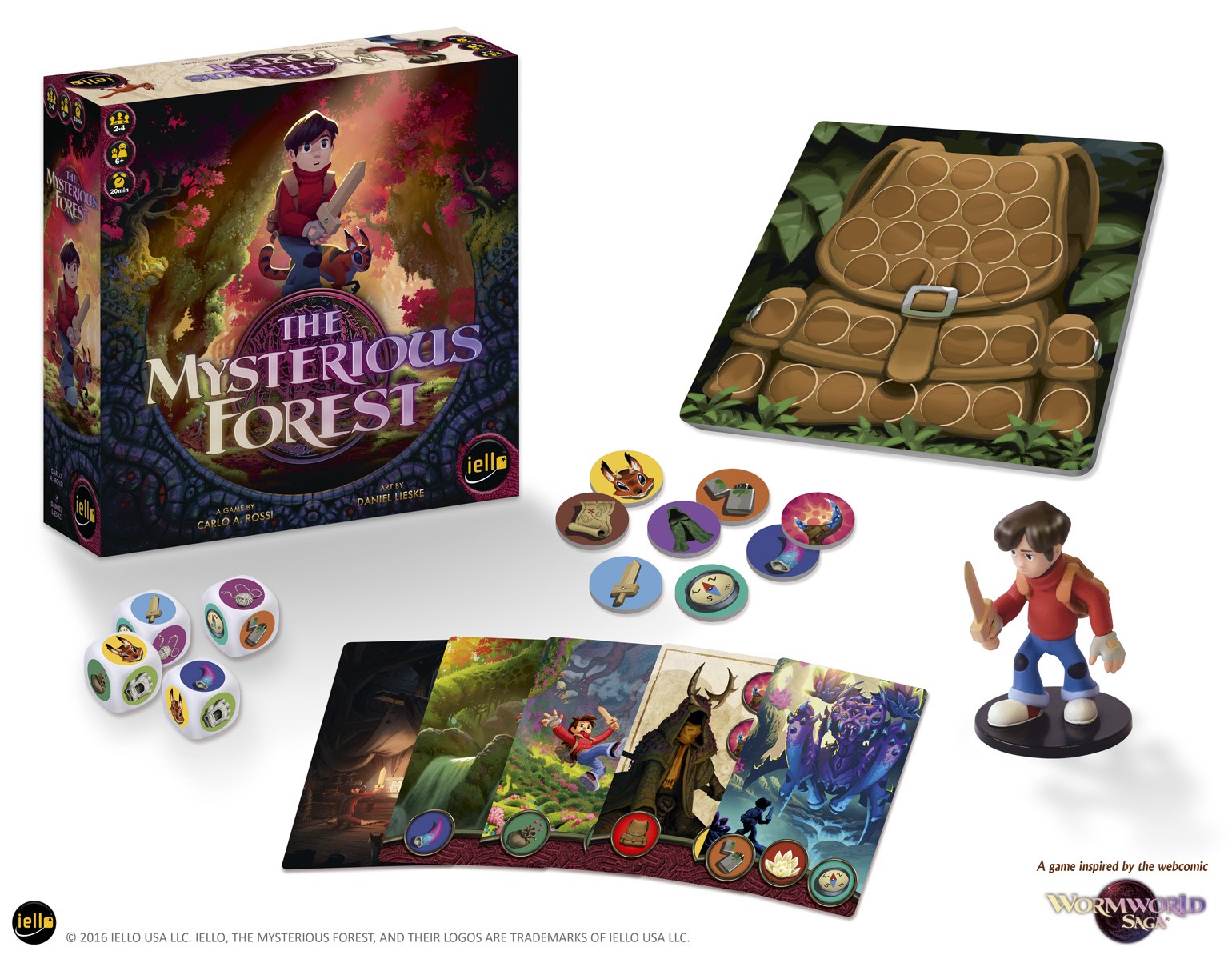 Bottom Line: Iello has succeeded in making a memory game fun for families. Mysterious Forest is absolutely gorgeous. The card art is amazing and thematic. Each forest card is different, showing a unique situation such as slipping down a cliff and requiring two gloves and a sturdy rope to successfully get back up and to the next card. In the end, you have a small story of what happened and how you resolved it. The storytelling aspect is not necessary but it is certainly fun. The box opens like a book (which is a nice touch) with a few short comic panels to get you into the story. Generally, memory are fairly simple: Either you remember what you need to remember or … you don’t. However, with the added element of luck in the dice rolls plus the wanderer’s staff and the help of your best feline(ish) pal, Loki, you can certainly mitigate your forgetfulness. While the gameplay itself is simple (basically remember and then roll dice) there are some additional decisions that make this game a cooperative challenge for children too old for standard memory games but maybe too young yet for the standard cooperative entry point of Forbidden Island. As an added bonus, you are provided with a few different difficulty settings. You may start as a Budding Explorer but you will be a Hero of the Forest in no time.
Bottom Line: Iello has succeeded in making a memory game fun for families. Mysterious Forest is absolutely gorgeous. The card art is amazing and thematic. Each forest card is different, showing a unique situation such as slipping down a cliff and requiring two gloves and a sturdy rope to successfully get back up and to the next card. In the end, you have a small story of what happened and how you resolved it. The storytelling aspect is not necessary but it is certainly fun. The box opens like a book (which is a nice touch) with a few short comic panels to get you into the story. Generally, memory are fairly simple: Either you remember what you need to remember or … you don’t. However, with the added element of luck in the dice rolls plus the wanderer’s staff and the help of your best feline(ish) pal, Loki, you can certainly mitigate your forgetfulness. While the gameplay itself is simple (basically remember and then roll dice) there are some additional decisions that make this game a cooperative challenge for children too old for standard memory games but maybe too young yet for the standard cooperative entry point of Forbidden Island. As an added bonus, you are provided with a few different difficulty settings. You may start as a Budding Explorer but you will be a Hero of the Forest in no time.
Zoowaboo
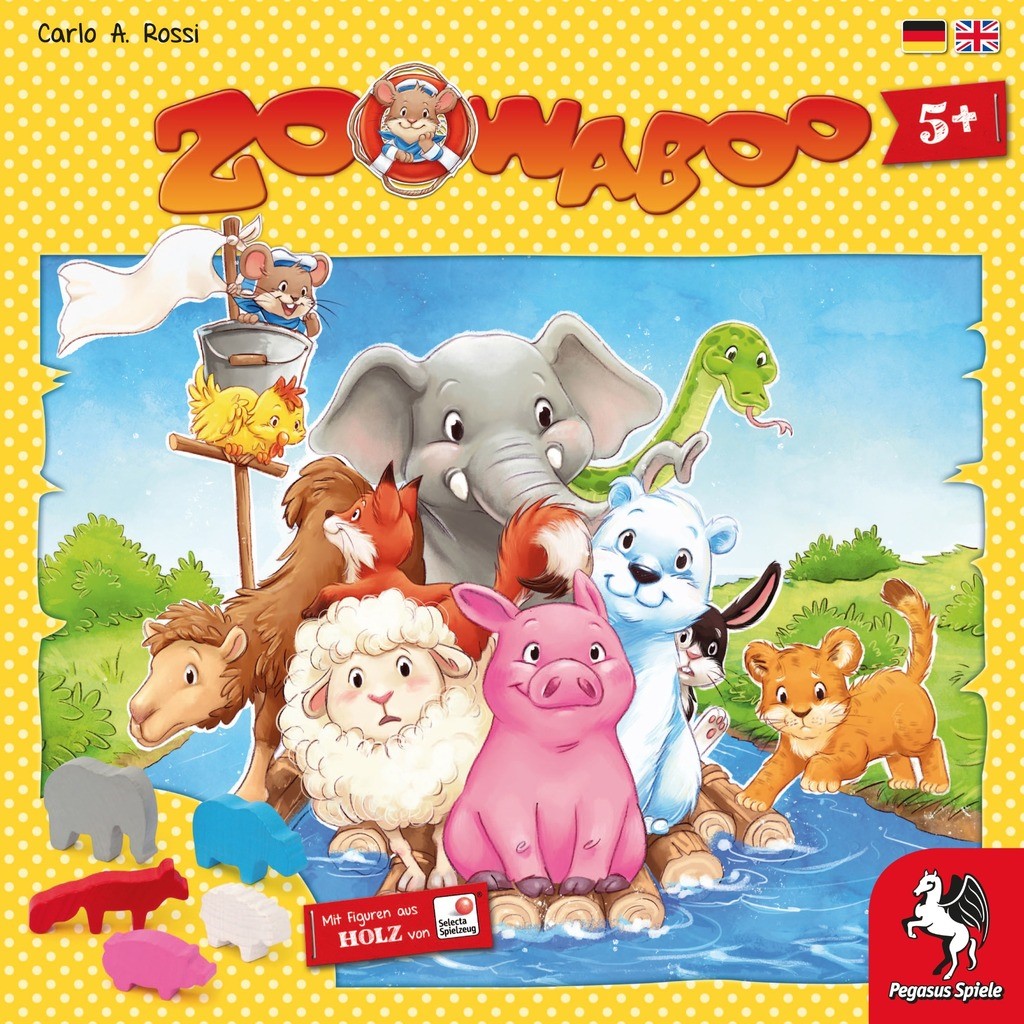 Zoowaboo (BGG) is one of those rare delights that makes it totally fine for young kids to bluff and bid. The process of this game is simple. You take one of the rafts and then randomly choose 10 animals cards to put around it along with the associated animal figure. Then each player needs to take a look at the animal and the raft (the middle of the raft is cut out) and determine whether or not the 10 animals could possibly fit in that space. Each player then has two chips (a “yes” and a “no” chip) and they choose one secretly. Once everyone has made a decision, the chips are flipped over.
Zoowaboo (BGG) is one of those rare delights that makes it totally fine for young kids to bluff and bid. The process of this game is simple. You take one of the rafts and then randomly choose 10 animals cards to put around it along with the associated animal figure. Then each player needs to take a look at the animal and the raft (the middle of the raft is cut out) and determine whether or not the 10 animals could possibly fit in that space. Each player then has two chips (a “yes” and a “no” chip) and they choose one secretly. Once everyone has made a decision, the chips are flipped over.
If everyone said, “Yes. Obviously all those animals can fit on that raft,” then one more card is added and everyone votes again. If everyone says, “No. There is no way that all those animals can fit on that tiny raft,” then you randomly swap one of the animals for a new one. But most likely you will get a mix of votes. Those who said “Yes” have one minute to figure out how to fit all those animals on the raft. All the animals must be placed flat on the raft and can’t be stacked.
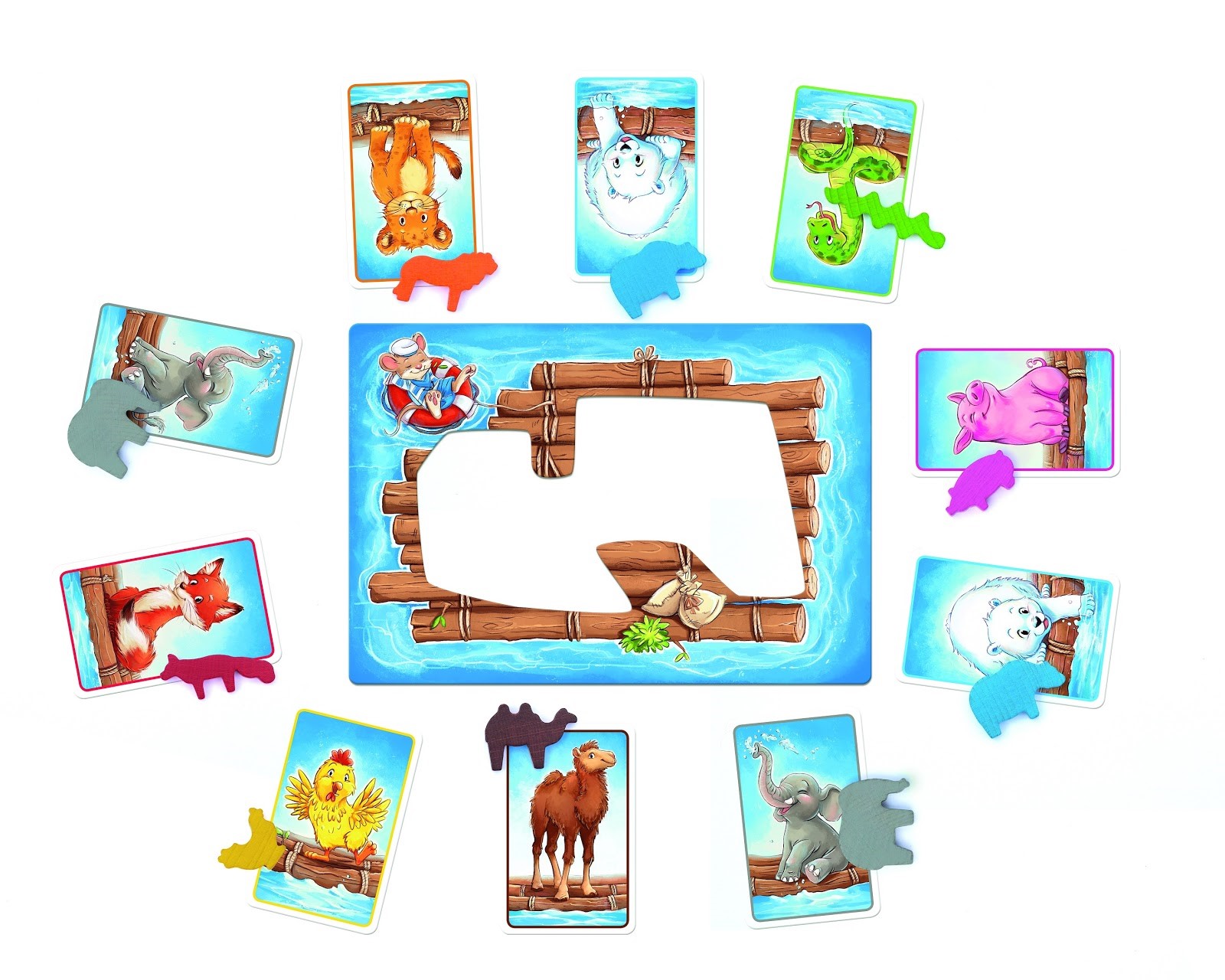 This is played for six rounds and each of the six different rafts are used with a new complement of animals hoping to get aboard.
This is played for six rounds and each of the six different rafts are used with a new complement of animals hoping to get aboard.
Bottom Line: Zoowaboo provides a nice twist to the standard cooperative game since partnerships will vary every round. The game plays 2-4 children but it is easy enough to accommodate larger groups and is perfect for ages 5+. While a full round of six rafts may be too long for younger children, it is perfectly fine to play as many as desired and then just try to stack the animals as high as possible, Animal Upon Animal style!
Dr. Eureka
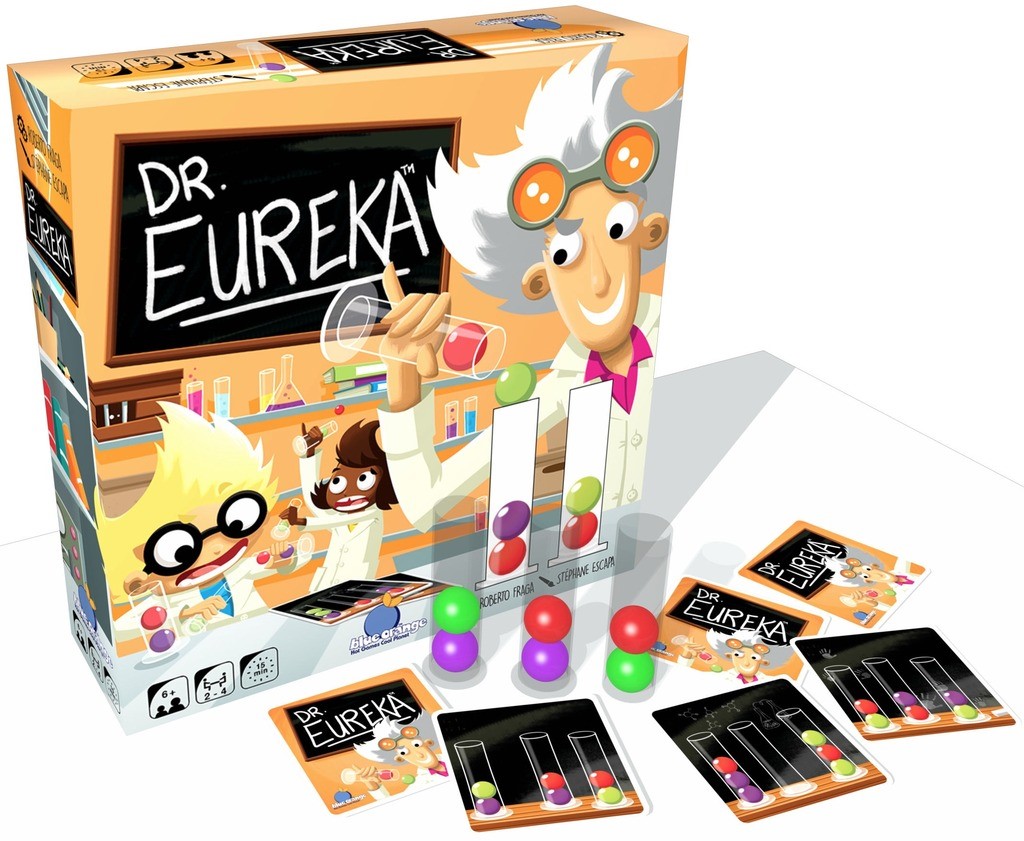 Dr. Eureka (BGG, Amazon) is a real-time, dexterity, pattern-matching game for 1-4 players. What that means is that everyone starts with the same thing ̶ three test tubes ̶ one with two purple marbles, one with two green marbles, and one with two red marbles. Then a challenge card is flipped over showing three test tubes with the marbles in a specific order that the players have to match in their own test tubes. The first one to do so, yells “Eureka!” and collects the challenge card.
Dr. Eureka (BGG, Amazon) is a real-time, dexterity, pattern-matching game for 1-4 players. What that means is that everyone starts with the same thing ̶ three test tubes ̶ one with two purple marbles, one with two green marbles, and one with two red marbles. Then a challenge card is flipped over showing three test tubes with the marbles in a specific order that the players have to match in their own test tubes. The first one to do so, yells “Eureka!” and collects the challenge card.
This is the tricky part. You need to mix and match the marbles into the test tubes without dropping or touching any of the marbles. Chemical can be volatile after all. So, you are basically “pouring” marbles to transfer them from one test tube to the other.
The dexterity element of this game makes it a challenge and the real-time, racing, element makes it exciting. The rules are simple to pick up quickly and within a minute you are moving along, mix and matching compounds to score points. Personally, I like the “Expert Mode” where you add an additional rule ̶ you can’t put down any of the test tubes until your compound matches the challenge card. This makes it delightfully easy for adults to increase the difficulty for themselves while allowing younger children to pick up and put down test tubes at will.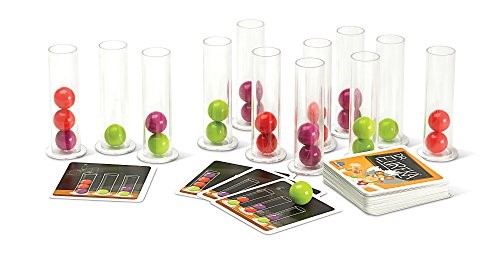
Bottom Line: This is exactly what a children’s game should be. Easy enough to learn so it can be played without parents. Fun, goofy, and approachable theme with a toy factor attractive to a wide spectrum of ages (who doesn’t want to be a mad scientist?). It requires practiced reflexes, pattern and color matching, and good hand\eye coordination. And the best is that it can be easily played as a game (where we track points) or as an activity (where we just race and play for the fun of it).
Shiba Inu House
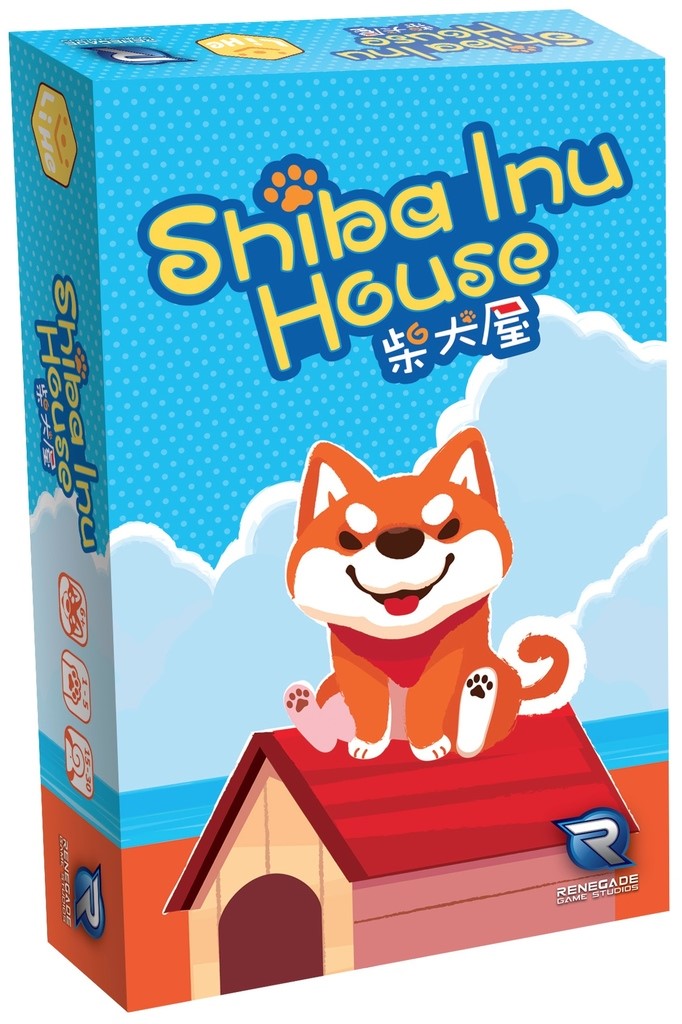 Shiba Inu House (BGG, Amazon) is another game from Aza Chen who is a master of painfully adorable card games. It will be released in March 2017, but if you need to experience the cuteness immediately, just take a look at Cat Tower, Kitty Paw, or Doggy Go! My teeth practically hurt just looking at them. Similar to Kitty Paw and Doggy Go!, Shiba Inu House is a pattern matching game where you have a deck of adorable Shiba Inus sitting (or playing) on the roof of their dog house. The players each take a face-down Dog House Card and place it in front of them. At the same time, they flip their card over and then race to be the first, second, or third person to place their cards properly in order to create a matching dog house.
Shiba Inu House (BGG, Amazon) is another game from Aza Chen who is a master of painfully adorable card games. It will be released in March 2017, but if you need to experience the cuteness immediately, just take a look at Cat Tower, Kitty Paw, or Doggy Go! My teeth practically hurt just looking at them. Similar to Kitty Paw and Doggy Go!, Shiba Inu House is a pattern matching game where you have a deck of adorable Shiba Inus sitting (or playing) on the roof of their dog house. The players each take a face-down Dog House Card and place it in front of them. At the same time, they flip their card over and then race to be the first, second, or third person to place their cards properly in order to create a matching dog house.
To achieve this, each player has an identical set of Shiba Inu cards that have a Shiba Inu on a dog house roof in the center of the card and is flanked by two color/pattern blocks. By placing the cards next to each other, you can make a dog house of different colors and patterns. Once you think you have the correct pattern, you grab one of the scoring cards (there is one less scoring card than number of players so if you are the slowest, you get no points).
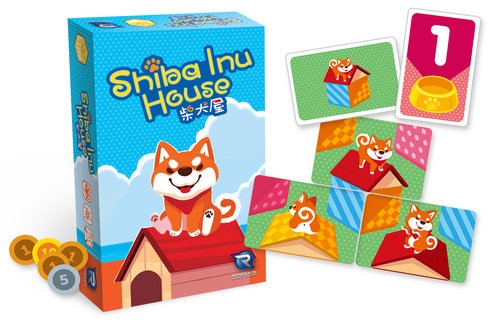 The dog house cards will increase in difficulty and after eight rounds, you count up your points and see who the winner is! Games like Shiba Inu House or Dr. Eureka can be difficult for some players. They rely on speed, accuracy, and dexterity. However, in Shiba Inu House, there is always an option of putting all the scoring cards out allowing for all players to score points each round. If you want to introduce something more visually appealing to your pattern-matching patrons than Set, this is a good option. It is also perfect for basically every librarian on the face of this planet. Ever.
The dog house cards will increase in difficulty and after eight rounds, you count up your points and see who the winner is! Games like Shiba Inu House or Dr. Eureka can be difficult for some players. They rely on speed, accuracy, and dexterity. However, in Shiba Inu House, there is always an option of putting all the scoring cards out allowing for all players to score points each round. If you want to introduce something more visually appealing to your pattern-matching patrons than Set, this is a good option. It is also perfect for basically every librarian on the face of this planet. Ever.
